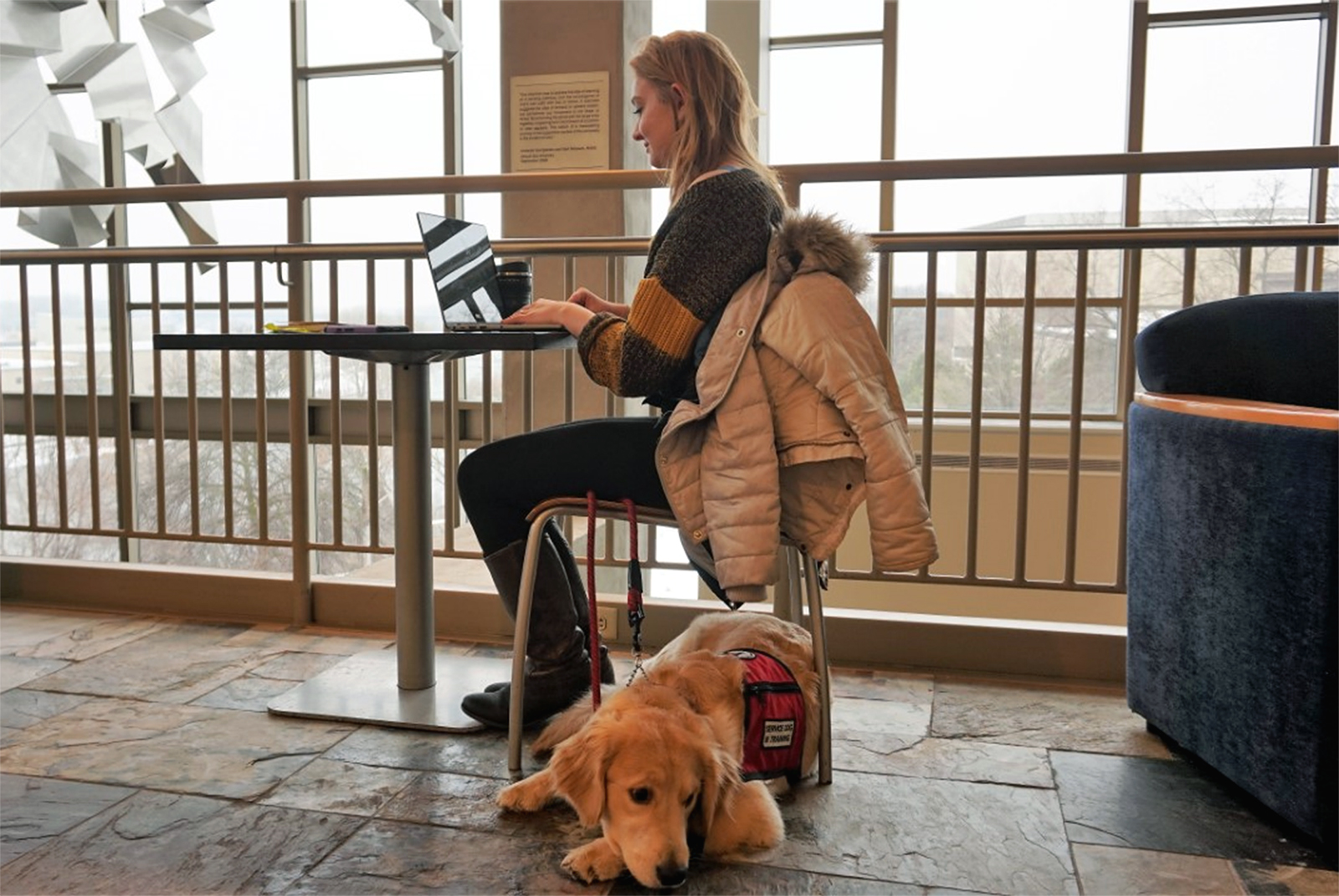Willow lies next to her trainer, junior Madison Murray as Murray does her work.
Photo by Larissa Davis
As most students who don’t live under a rock have noticed, there’s a new dog around campus this term. Willow, a ten-month-old golden retriever, was born in March of last year and began training with juniors Rachel Taber and Madison Murray over winter break.
Since Willow is the only service dog on campus, how to treat her presence can be a source of confusion for students. Seeing a cute puppy is exciting, so the immediate instinct for most people is to pet or talk to her.
However, Willow is a service dog, so a little restraint is important. “If she has her red vest on, please do not try to make any contact with her at all,” said Murray. “Do not talk to her, do not look at her, do not touch her, obviously.”
To do so would be to interfere in Willow’s training. “It’s important with her training because she is really trying to focus and we’re trying to teach her with as few distractions as possible,” Murray explained. “Practice your willpower,” Taber added.
The training element makes Willow different from other dogs on campus, such as emotional support animals (ESAs). ESAs can go through training, but it is not required. They are not trained to be in public places and are not allowed to attend class alongside students.
Willow is training to become a guide dog or possibly working as a medical alert dog. Taber and Murray are working with Custom Canines, “which is a service dog academy in Madison,” Taber explained. “They provide service dogs to clients free of charge.”
One of the main exercises Willow is working on is item identification. “We’re teaching her what different items are: shoes, and socks and toys,” Taber said. “These things are kind of silly right now but once, like later on, it’ll be like, medicine, or like, car keys or bigger objects for if she is helping somebody that is blind, or somebody who’s having a seizure or their blood sugar is low and she might need to get medication.”
Training a dog is no small task, especially while also balancing school life and the demands of a Lawrence education. Murray and Taber share Willow, so they switch off every week taking care of her. “It is fun and it is enjoyable, but it is also a lot of work that I don’t think people always realize we’re putting in,” Murray said.
For example, trainers have to cover all the costs of the animals, such as food or toys, by themselves.
“I mean, we do it for a reason, because it is a really cool experience, added Taber. “But we are always with it and we’re always having to pay attention to it and paying attention to the environment that it’s in and making sure that it is safe, and where we are is going to be able to help it learn.”
Willow’s training could last from a year and a half to two years. She will be at Lawrence, “essentially, as long as this environment is helping her learn,” Taber said.
“If you’re interested in training contact us,” she added.
Although she may not be as available for cuddling or petting like other dogs, having Willow on campus certainly makes the gloomy winter feel a little brighter.

